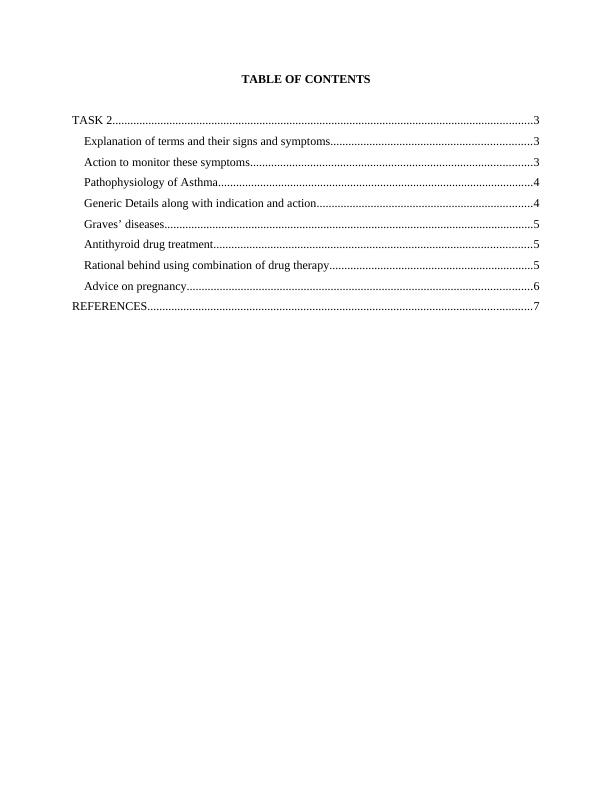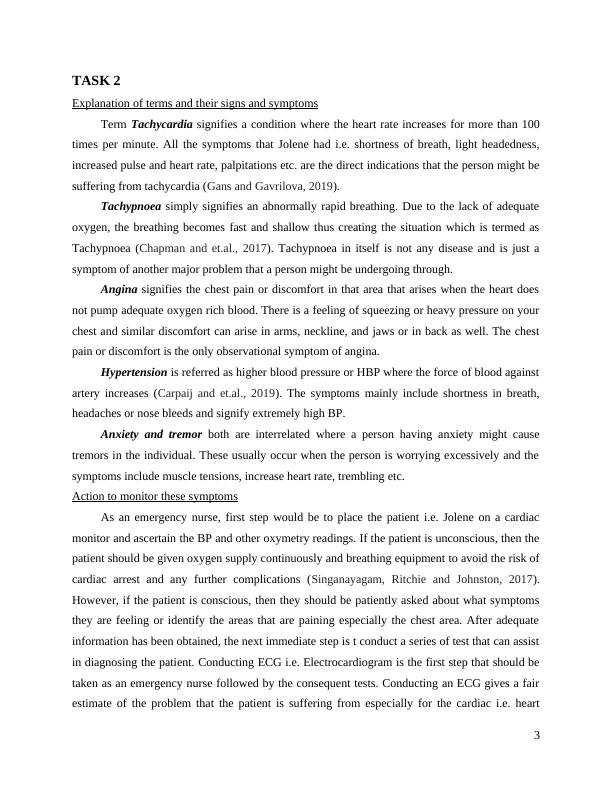Pathophysiology of Asthma and Graves’ Disease
8 Pages2257 Words65 Views
Added on 2023-01-12
About This Document
This document provides an explanation of terms and their signs and symptoms related to tachycardia, tachypnoea, angina, hypertension, anxiety, and tremor. It also discusses the pathophysiology of asthma and Graves’ disease, along with the generic details, indications, and actions of medications used to treat these conditions. The rational behind using a combination of drug therapy is explained, and advice on pregnancy with these conditions is provided.
Pathophysiology of Asthma and Graves’ Disease
Added on 2023-01-12
ShareRelated Documents
End of preview
Want to access all the pages? Upload your documents or become a member.
Questions-Answers on Drug Therapy | Study
|11
|2569
|22
Case Study: Safe Clinical Administration of Patient.
|10
|2689
|13
Assessment Center Case Studies Practice
|9
|2624
|16
NUR231 Case Study Response Template
|8
|2455
|10
Medical Health | Assignment
|8
|2319
|21
Case study response template
|10
|2613
|16



